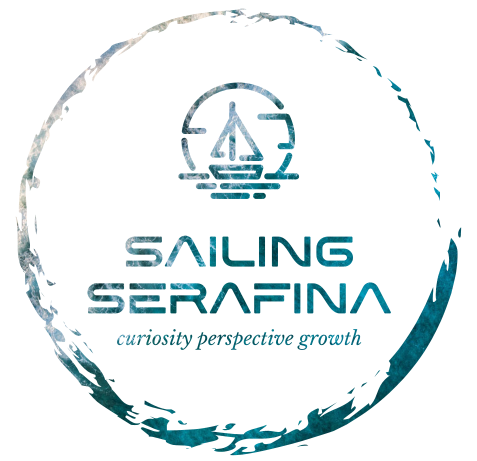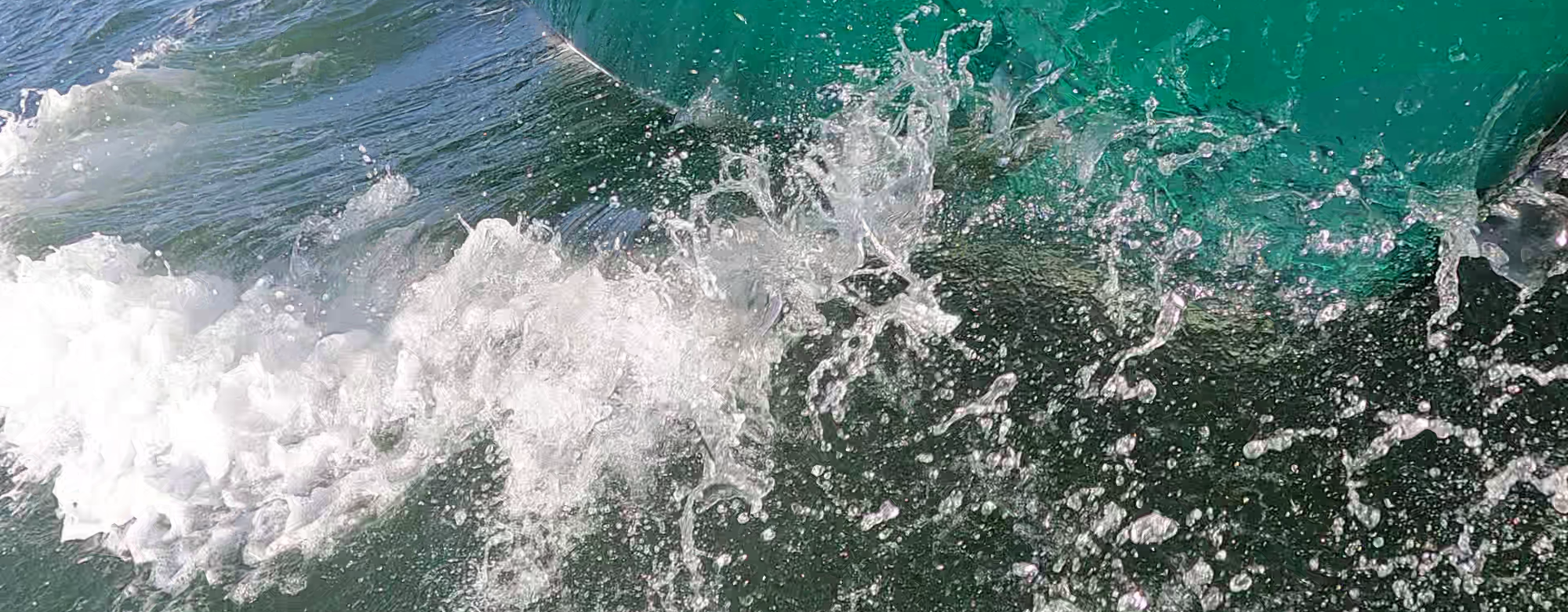I missed the sea. The last twenty years or so have been spent on land. I missed the simplicity. So I bought a boat, moved onto it, and then Covid hit and nothing happened. It turns out that life on a boat is low risk and lockdown was good for whittling plans. The plans slowly turned into a refit.
Refits thrust you into a frustrating immobile state. A boat is designed to move but it can’t because everything is in pieces and tools are everywhere. Eventually, you finally emerge blinking into the lightness of being on a thing that could actually start going places, just not quite yet. That is yet to come.
I like heading west and south best. It feels good to be heading to where the butter melts. The first sea trial was to be a simple run taking advantage of two beautiful days. Very light winds were forecast so we’d not be going far or doing much sailing. But it would be a good test of things. The new off-grid electric cooking system and, well, everything could be tested.
I’ve planned to get rid of gas for two reasons. It is becoming very expensive and there are no international gas cylinders that can be filled everywhere. So a refill means buying a cylinder and trying to get rid of the empty. A third reason might be that it’s a bit of a carbon size ten, and so not very green.
Most of successful voyaging is down to diligent preparation. Things break unexpectedly, inconveniently, and often far from land. There is nobody to rely on but yourself. So it’s vital that the refit is comprehensive and fit for the purpose you intend for the boat. A coastal cruising regime is quite different from crossing oceans.
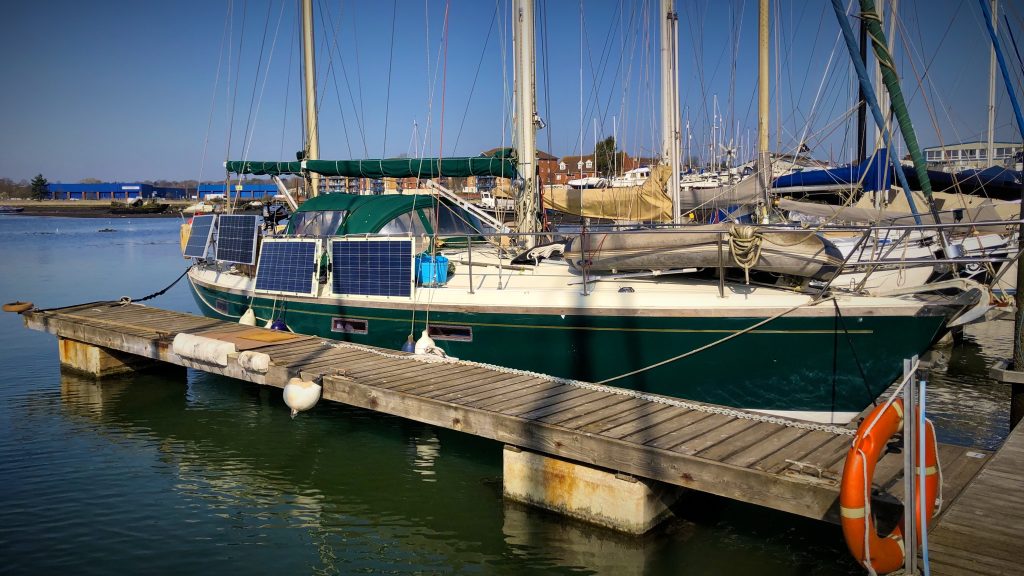
The crew, Eddie, joined at Southampton in the late morning. We did a quick shop to ensure there would be stuff aboard that he had chosen too. Fewer complaints get lodged against the galley that way. Stores were packed away and suddenly the engine was running and the mooring lines were simplified. Other boat people here always turn out to help with departures and arrivals.
Chains, so the metaphor says, break at the weakest link; identifying and beefing up that link is the fastest way to make the whole chain stronger. This is an iterative process that keeps the chain as strong as it can be with the resources available. It might be great to have a macerating electric loo but far more important to have reliable skin fittings. It’s the same with additions and improvements too.
Leaving the dock can be worrisome. I can’t remember a time when I slipped the lines without a frisson of fear and a spurt of adrenaline. This is what keeps me safe at sea. Bad things can happen out there. It’s a bit like living ashore, but not quite so dangerous.
There is a downside to fear, though. Even just the prospect of it can be limiting. It keeps you in a state of preparation, which is safe because you are doing something useful without actually having to face the thing you fear. But when the purpose is to actually go to sea, you risk just going from job to job, doing things that may be needed but are not critical. A lot of maintenance can be done under way or in the next port. Boats are pretty resilient and so long as the essentials are in place there is no reason not to make DIY part of the gig.
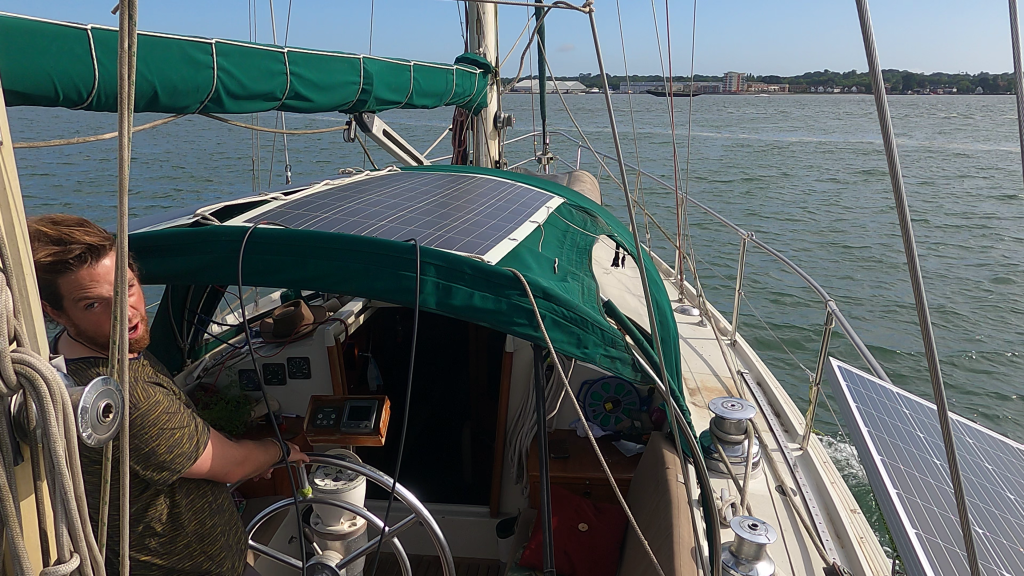
I handed the wheel to Eddie as soon as we had cleared the marina. That way he’d get a feel for the boat quickly and become confident about steering decisions. Very soon, we were at Dock Head and hurtling across the channel to track down just outside of the red buoys marking Southampton Water. The mild SW wind gave us an opportunity to fly the Genoa and turn off the engine.
Planning a voyage is about research and imagination. While the crew imagines sunny days, clear nights and new ports, the skipper is tormented by the prospect of potential catastrophes. Things break, people make mistakes, lightning can strike, large ships can have poor watch-keeping, weather and tides can turn out not as predicted. The skipper’s mind is full of these a long time before the engine starts and the mooring is slipped. Identifying likely failure modes and devising action plans are what will reduce the chances of disaster. However, sometimes bad stuff happens and you have to be prepared for when it becomes a thing.
Just as we neared Calshot Spit, a vast cruise liner chased us into the narrow gap between Castle Point, Black Jack and the Calshot Spit Lanby and the shallow spit. These are buoys that mark the Thorn Channel. The bellowing hooter repeated five short blasts to remind the world that they were, well, boss.
At sea is where the proof of the refit pudding is seen, or you fail fast, head somewhere safe, fix the problem and learn from it. If you stop learning then you really should stop sailing. Sea trials ought to stress various functions of boat and crew. Not all at once, of course because that could channel a disaster. A good refit will be unlikely to produce any serious issues, however!
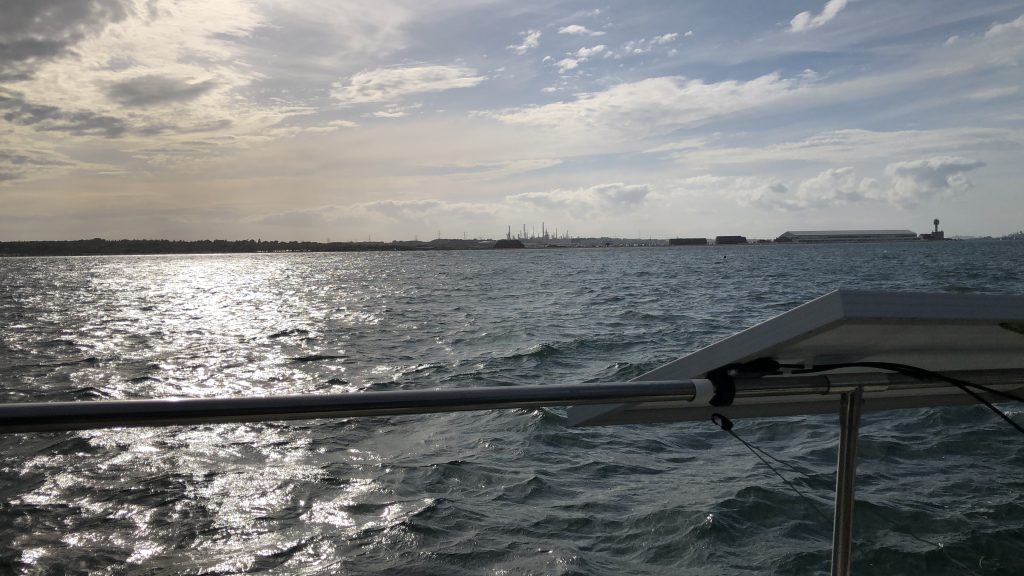
The Solent became less fussy and we turned west to face the light wind and make our way down the western arm of the Solent. Eddie really did seem to enjoy steering and was better at it than the autopilot, which kept flipping out of ‘Auto’ to ‘No Pilot’. So as the afternoon slowly turned into evening we began looking for a good place to anchor at Hurst Castle. The gap between the Isle of Wight and the Hurst Spit is narrow so the tides get to rip through the Needles Channel. A well-set anchor is a must, I set the anchor app so it would warn me if we moved out of a 50m circle.
Unless you propose mostly single handing then assembling and managing a crew is a significant task. Without a permanent crew I am going to have to become good at putting ad hoc crews together. There are a number of websites to facilitate this. Members like Eddie who pay to join a crew finding site are likely to be really committed, so good choices.
Many of our political class miss a fundamental component of leadership. I like the notion of the Arthurian Bargain. A leader can only expect allegiance from those they lead if they provide protection. This means ensuring the necessary skills and knowledge exist in the crew so that they can learn and then be unleashed on the job.
Dinner was fine and enjoyable. It was just like being alongside and resulted in washing up – like always. This done, it was soon time to go to bed. From ten till three all went well. I slept peacefully. And then the anchor app started howling. It was the time of the horns, the pre-dawn half light. I leapt from my bunk and checked to see if this was going to be a problem. It wasn’t. But by the time I felt comfortable it was just beginning to get light. And it was doing this in a way that just had to be photographed. So I stayed up for a few hours and enjoyed recording the spectacle before going back to bed for a few more precious moments of sleep.
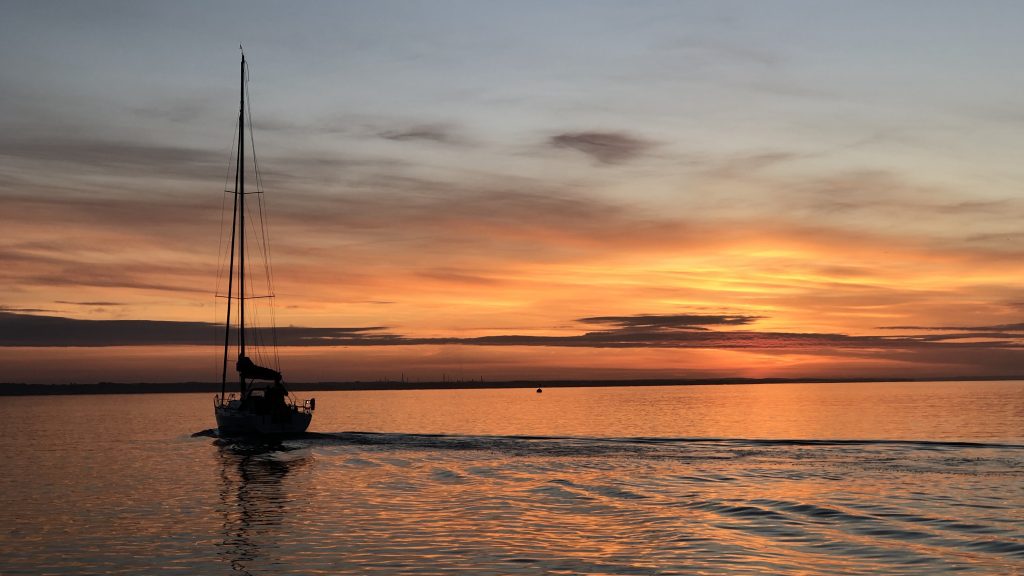
Short voyages are much easier to manage. Day sailing in good conditions delivers well to crews and passengers alike. On longer voyages, those over one or more nights, someone has to be on watch at all times. They take on serious responsibilities for the safety of the others, which can be quite overwhelming at first. The most successful watch system I have known uses three watches. Four hours on and eight off with a dog watch of two two-hour stints from 16:00 to 18:00 and 18:00 to 20:00. This ensures that the watches rotate through the day and everyone gets variety. The incoming watch makes a drink for the outgoing watch and for themselves. Listing everyone’s preferences for tea, coffee and sugar etc means that they get what they prefer. At night, some snacks are left for when people get hungry.
A good sailor accepts the biblical admonishment to look out for everyone else. Loving your neighbour makes for a happy and inclusive crew. At some point, it is not uncommon for someone to need to ground their static. They must be given room to do this. Falling out is never much fun so avoiding it is key.
I’m acutely aware that although it’s my boat, it’s the crew’s home while they are aboard. Whilst the final decision is mine, I prefer a collaborative style where everyone has a voice in exploring the possibilities. A shouty alpha captain may work on a race yacht but where the objective is the voyage itself that does not work so well. It’s like peril for the sake of it.
Staying within the ability of the boat to harvest energy from sun, wind and motion minimises reliance on diesel and therefore the carbon hoofprint. When taking on stores, making sensible choices of fresh and preserved foods helps ensure that the diet will be healthy. If energy harvesting permits then a freezer will keep meat for ages; and pre-prepared meals for night watches, for bad weather and for later on a long voyage when the fresh veg is getting low.
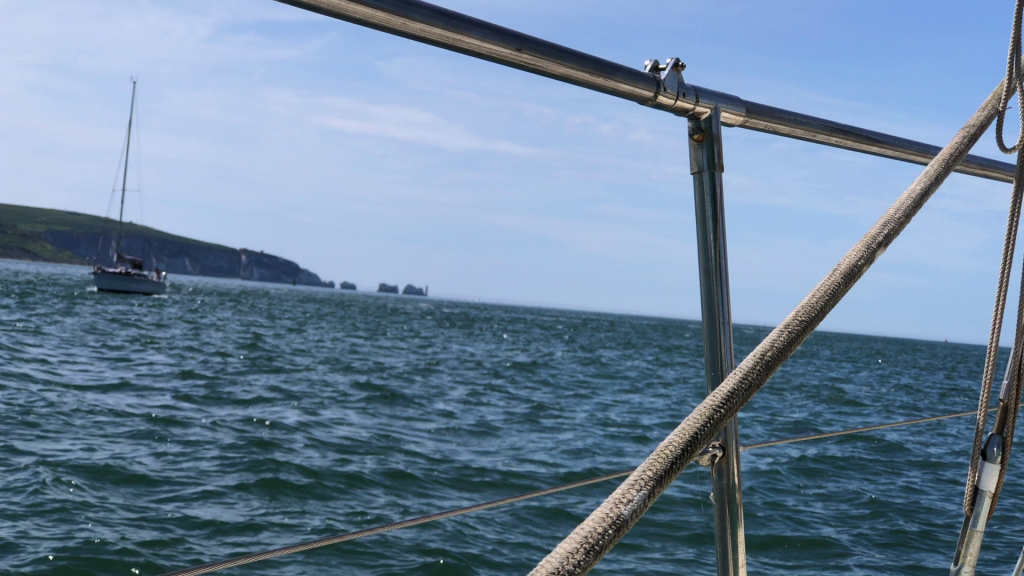
Eddie wanted to see the Needles, but breakfast came first and then squaring away the beds etc. Motor on and the new electric winch pulled up the anchor and with it a glob of sticky mud. The deck wash cleared that off. There was no way that we had drifted during the night. The alarm was most likely due to the enormous amount of chain that we had laid out unravelling from a pile.
The tide was flooding so progress was slow. After we reached the Warden buoy it was clear that this would take a very long time. So we turned around and headed sadly East and a bit North towards Calshot.
Routine! I hate the word. It has been defined as the thief of time. But, it is vital to ensure that certain things are done so that problems do not take the boat by surprise. So routine checking of things like the rigging, the batteries, fresh water reserves and growth on the hull etc should be done regularly. The Sailing Britican website has a bundle of checklists that are born of hard won experience and I found to be worth the investment.
The wind was very light and with the tide under us the sails would barely fill. So it was going to be motoring before turning up Southampton Water. Rounding Calshot meant the Genoa could go up again and we wafted gently back to Dock Head. Eddie and I steered and the autopilot botched the job whenever it was given the task.
Not pushing cost into the future is a fundamental aspect of sustainability. There are no overdrafts with batteries or fuel tanks. I chose coppercoat for the antifouling. This will last a long time and will require maintenance, just not much more than cleaning. The underwater hull cleaner I bought was expensive but equivalent to the cost of a single haul out. So over the life of the coppercoat it’s going to be a win; there will be far fewer haul outs. Another benefit is that the osmotic blisters are all carved out and repaired. The hard epoxy of the antifouling will keep things tight for years.
The trip back to the marina was uneventful and when we got back there were boat people ready to take our lines, I switched the engine off and suddenly it was all over. Not the most exhilarating sail but Serafina did everything right and there were no dramas. Eddie was great crew – success!
For me, this was a taste of life to be lived. I am becoming a sea-beastie again, which is very very good. There will be many challenges ahead and much work to do to get Serafina ship shape for ocean passages. I am so looking forward to that moment when land disappears under the horizon and the days and nights become simple with possibility again.
All comments can be made on Serafina’s Facebook Page.
